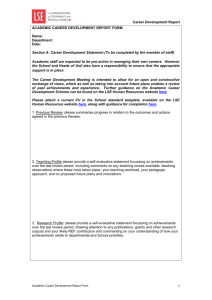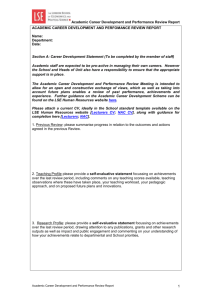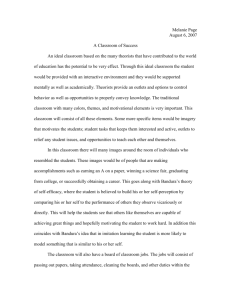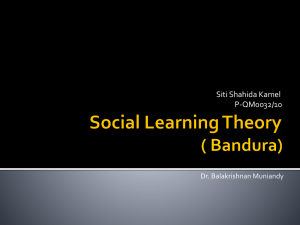Title: Parenting Outcome Expectancy Scale
advertisement
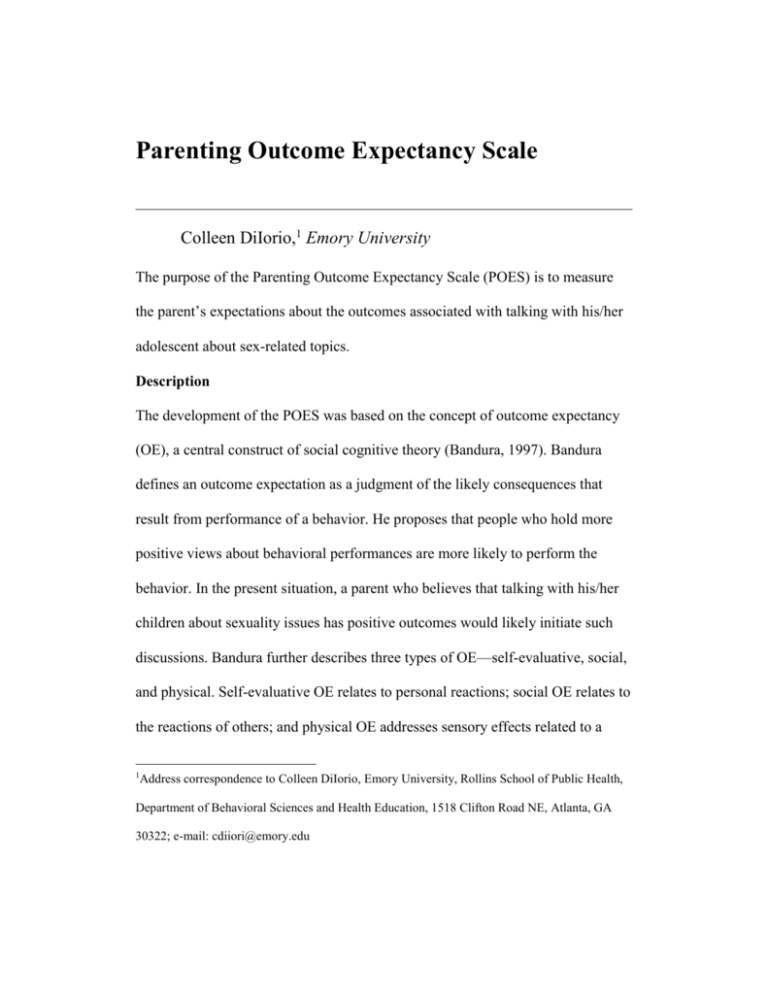
Parenting Outcome Expectancy Scale __________________________________________________________________ Colleen DiIorio,1 Emory University The purpose of the Parenting Outcome Expectancy Scale (POES) is to measure the parent’s expectations about the outcomes associated with talking with his/her adolescent about sex-related topics. Description The development of the POES was based on the concept of outcome expectancy (OE), a central construct of social cognitive theory (Bandura, 1997). Bandura defines an outcome expectation as a judgment of the likely consequences that result from performance of a behavior. He proposes that people who hold more positive views about behavioral performances are more likely to perform the behavior. In the present situation, a parent who believes that talking with his/her children about sexuality issues has positive outcomes would likely initiate such discussions. Bandura further describes three types of OE—self-evaluative, social, and physical. Self-evaluative OE relates to personal reactions; social OE relates to the reactions of others; and physical OE addresses sensory effects related to a 1 Address correspondence to Colleen DiIorio, Emory University, Rollins School of Public Health, Department of Behavioral Sciences and Health Education, 1518 Clifton Road NE, Atlanta, GA 30322; e-mail: cdiiori@emory.edu behavior. The POES includes items measuring only self-evaluative and social OE because there are no direct physical OEs that can be associated with discussions about sexuality. For the development of the POES, outcome expectancy was defined as the parent’s expectations about the outcomes associated with talking with his/her adolescent about sex-related topics. The original 15 POES items were written following a review of the literature and focus group discussions with parents of adolescents (DiIorio et al., 2001). Content and measurement specialists reviewed the wording of each item and the consistency of the idea presented in each item with the concept of OE as defined by Bandura (1997). Based on their reviews, all 15 items were retained for the final version with some minor changes in wording. The results of the initial reliability and validity testing using the 15-item version suggested that the POES could be improved by adding one item to measure cognitive self-evaluative OE and seven items to measure social OE. The addition of these eight items increased the total number of POES items to 23. Additional material pertaining to this scale, including information about format, scoring, reliability, and validity is available in Fisher, Davis, Yarber, and Davis (2010). Fisher, T. D., Davis, C. M., Yarber, W. L., & Davis, S. L. (2010). Handbook of Sexuality-Related Measures. New York: Routledge.

